Cornea Specialist, Department of Ophthalmology
Role:
- Academic Cornea Specialist – University at Buffalo Department of Ophthalmology
- Specialty:
- Ophthalmology, Ophthalmology – Cornea
- Location:
- Buffalo, NY

Position Overview
The University at Buffalo, Department of Ophthalmology and the Ross Eye Institute are currently recruiting a Cornea Specialist at the Clinical Assistant/Associate Professor level. Candidates must be BC/BE. This position includes a well-established outpatient base, protected academic time, teaching of medical students and residents, a new state-of-the-art facility, and excellent benefits. This position will include a large percentage of corneal surgery.
The successful applicant will arrive at a pivotal time in the history of the Department and of UB’s Academic Health Center (AHC), a consortium of UB’s five health sciences schools – dental medicine, medicine and biomedical sciences, nursing, pharmacy and pharmaceutical sciences, and public health and health professions.
This is an opportunity to join an organization focused on the future of medicine- one whose physicians and advanced practitioners’ partner with their patients to ensure a higher state of care and better outcomes. At UB Department of Ophthalmology, you will experience a deeper sense of compassion, greater breadth of diversity and a never-ending desire to raise the standard of medical excellence, regionally and nationally.
Minimum Qualifications include:
-MD/DO/MBBS (or equivalent)
-Board Certification/Board Eligibility – American Board of Ophthalmology
-Fellowship Training or Equivalent Expertise – Cornea
-Eligible for New York State Medical License
EEOC/AA
University at Buffalo is an affirmative action/equal opportunity employer and, in keeping with our commitment, welcomes all to apply including veterans and individuals with disabilities.
How to Apply
The UB Department of Ophthalmology has retained the services of Academic Med, the leader in healthcare recruitment solutions for academic medical centers, to assist with this strategically important recruitment effort. The search is being led by Academic Med’s Principal, Gentry Zacheis and Managing Director, Jim Hagood.
Please forward inquiries, questions, and/or nominations to:
- Gentry Zacheis
- Principal & Search Leader, Academic Med
- gentry(at)academic-med.com
- Jim Hagood
- Managing Partner, Academic Med
- jim(at)academic-med.com
Position Specifics
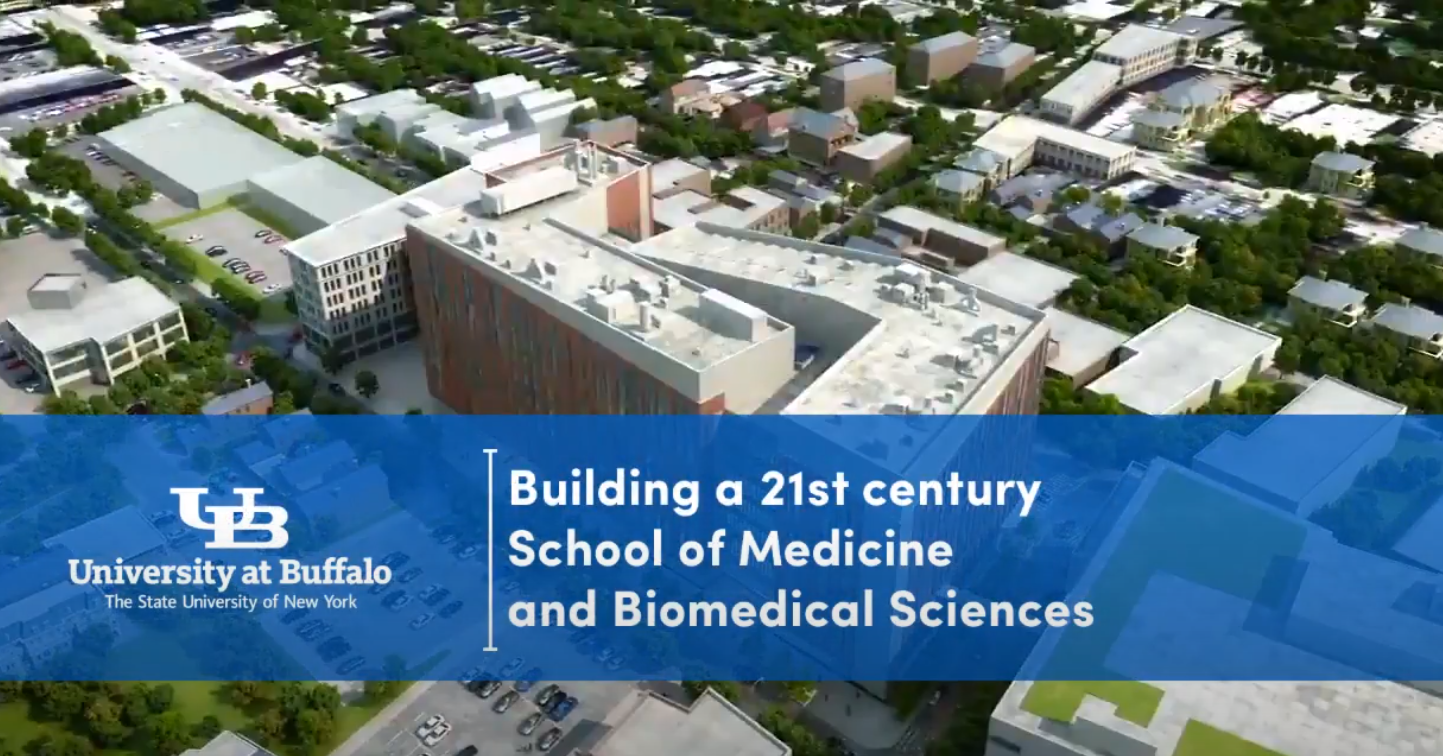
Division of Cornea & External Diseases
- Providing a patient-centered environment
- Being the leading teachers in patient care and quality improvement
- Cultivating an environment that nurtures and rewards lifelong learning
- Collaborating with colleagues and the healthcare system to attain the best outcomes for patients.
- Other opportunities include the charge to recruit and mentor excellent faculty, build a clinical program that fosters excellent clinical service to the community, and grow quality and outcomes research.
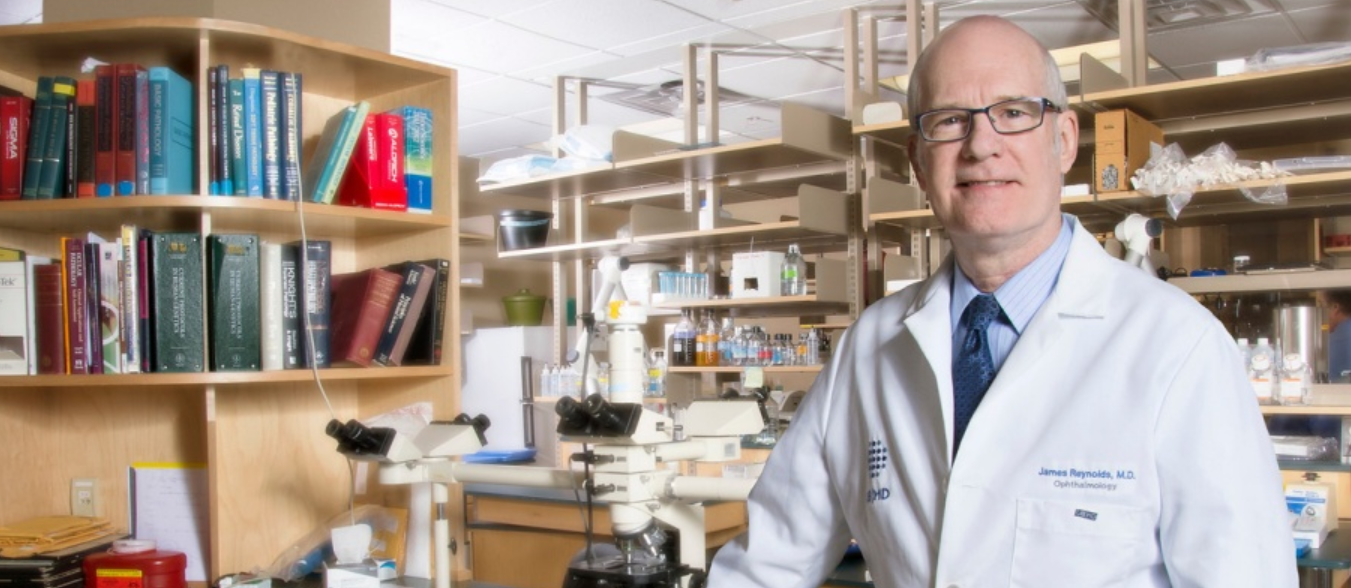
Department of Ophthalmology
The Ophthalmology department is headquartered at the Ira G. Ross Eye Institute. Our mission is the preservation of sight through excellence in patient care, education and research.
Our department is comprised of highly skilled ophthalmologists and professional staff who can provide a complete range of medical and surgical management of both routine and complex eye disorders. Our specialty services include cornea and external disease, neuro-ophthalmology, oculoplastic surgery, ophthalmic pathology, pediatric ophthalmology, glaucoma and retina and vitreous disorders. Medical residents and fellows train under close supervision of senior faculty physicians.
In the clinics, as well as in laboratories on the University at Buffalo campus, dedicated researchers work to provide new knowledge that will eventually lead to advances in patient care. Our research leads to sight-preserving treatments for conditions and diseases such as age-related macular degeneration, diabetic retinopathy and glaucoma. Our goal is to reduce visual impairment and improve the quality of life for people of all ages.
The Department offers an ACGME accredited residency in Ophthalmology and an Orthoptic training program that’s fully accredited by the American Orthoptic Council (AOC). We believe diversity in our faculty, workforce and student body is essential to our mission to preserve sight though excellence in patient care, education and research.

Ophthalmology Residency Program
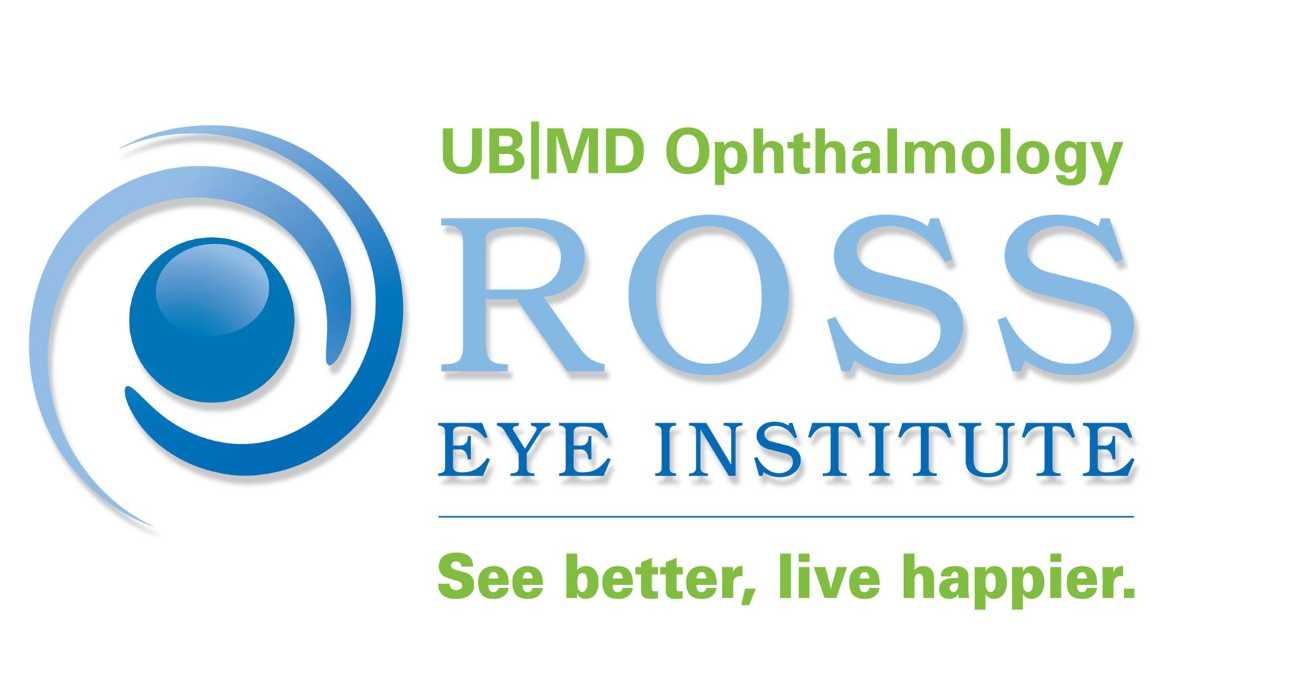
Ross Eye Institute
- State-of-the-art diagnostic and treatment services for all medical and surgical diseases of the eye and visual system.
- Cutting-edge research to understand and eliminate eye disease and the disability that accompanies vision loss.
- Comprehensive prevention services that include community education of medical providers and clients, early medical intervention, and vision screening programs.
- Assessment, intervention, rehabilitation, education, employment and human services for individuals of all ages at all levels of visual impairment.
- Superior education for medical students, resident physicians, graduate students, post-doctoral fellows, community physicians of all types, and allied health and social workers.

Vision Research Center
Our research leads to sight-preserving treatments for conditions and diseases such as age-related macular degeneration, diabetic retinopathy and glaucoma. Our goal is to reduce visual impairment and improve the quality of life for people of all ages.
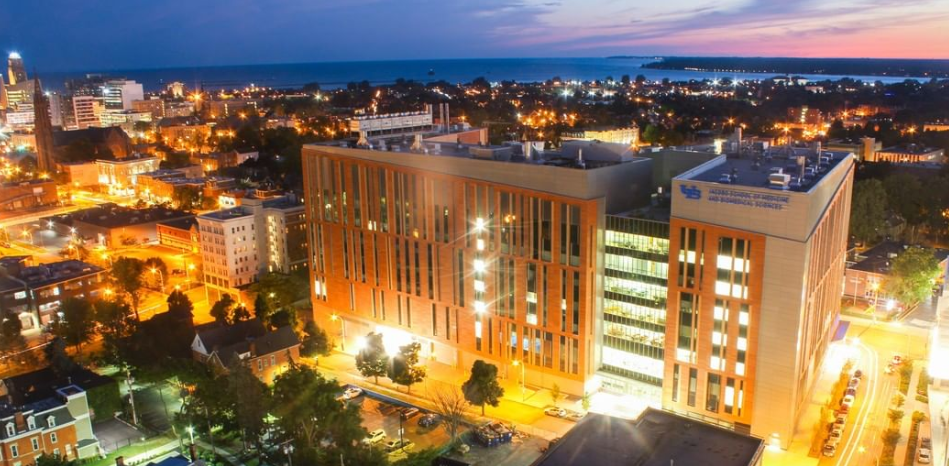
UB Opens, World-Class & State-of-the-Art Medical School in 2018
In January 2018, The University at Buffalo ushered in a new era in medical education by introducing to the public its hallmark $375 million new medical school building on the Buffalo Niagara Medical Campus. The new high-tech Medical School is designed for a new way of training doctors.
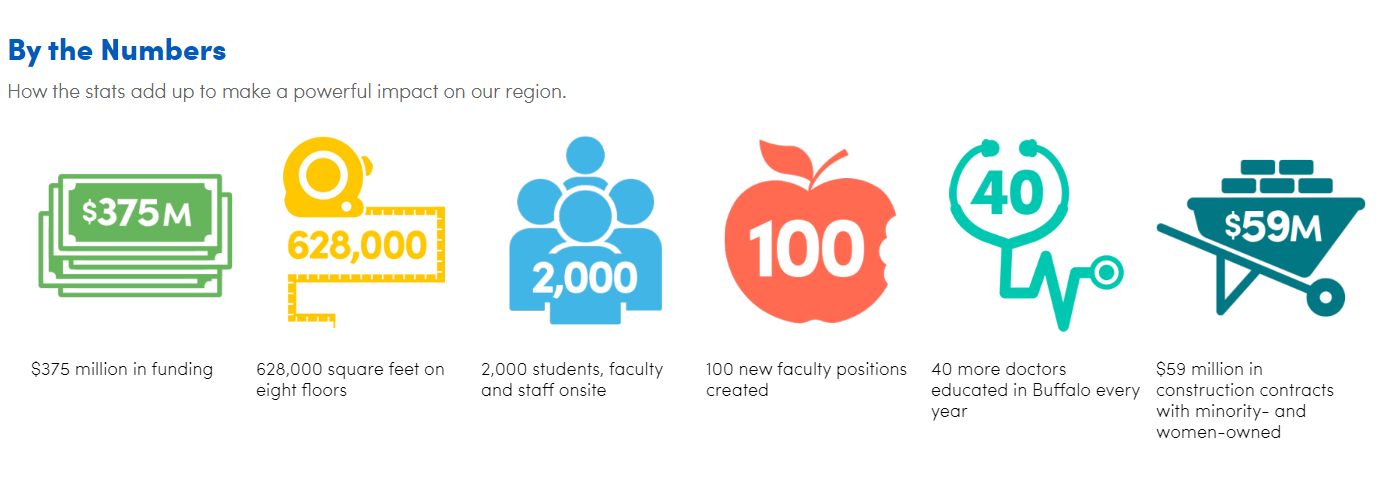
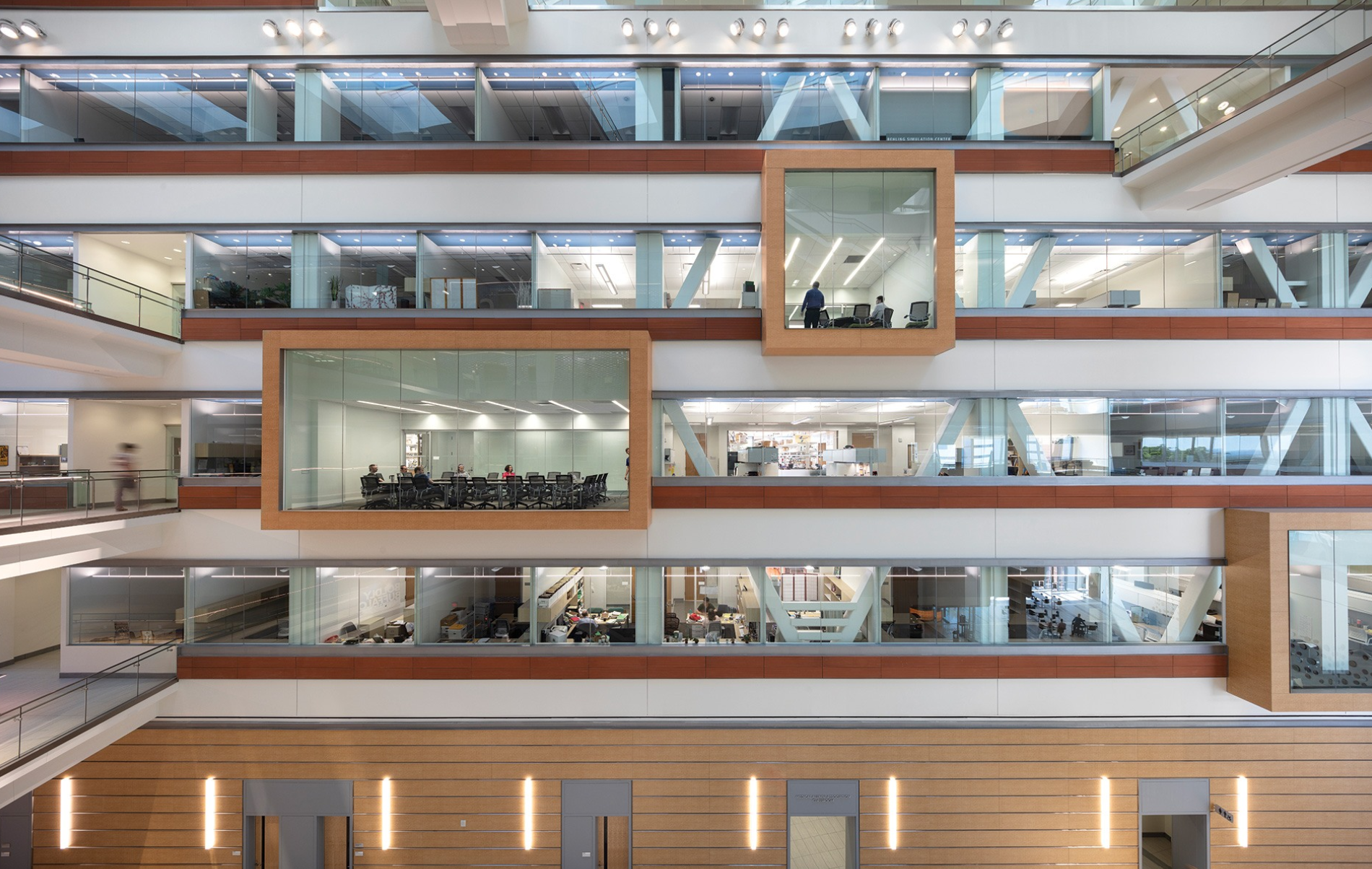
New Jacobs School will redefine Medical Education & Translational Research in the 21st Century
The state-of-the-art Jacobs School of Medicine and Biomedical Sciences will deliver world-class medical education, research and patient care – teaching a new generation of physicians in a facility that rivals other medical schools across the country.The new University at Buffalo School of Medicine and Biomedical Sciences will redefine medical education and translational research in the 21st century. The new transit-oriented medical school development will bring 1,200 students, faculty and staff to the school’s downtown campus. With the goal of fostering collaboration and interdisciplinary care, the new academic medical center will create connections that allow students, faculty, biomedical researchers and clinicians to move easily from classroom to bedside to lab.

$375 Million Medical School Designed with the Future in Mind
The $375 million medical school is a key component of the UB 2020 plan for academic excellence, which is intended to benefit students, faculty, staff and the Western New York community. Reflecting UB’s sustainability and climate-impact reduction goals, HOK designed a highly sustainable building and target Leadership in Energy and Environmental Design (LEED) Gold certification. The building design puts learning on display with glass-walled conference rooms and “floating operating rooms” that cantilever over the atrium, allowing all occupants to view the teaching and research underway inside. In the “flipped” classrooms, students can listen to a lecture and then swivel around to meet in small groups. A subway station connected to the lobby further activates the building by creating a space where students and faculty mix with NFTA riders.

UB Establishes Medical Education & Education Research Institute in 2019
In 2019, the Jacobs School established the Medical Education and Educational Research Institute (MEERI), a comprehensive and innovative institute for advancing medical education at UB. The institute will function as an academy for UB’s medical educators, supporting, advancing and recognizing Jacobs School faculty and instructional staff in teaching, learning, scholarship in education, mentoring and peer coaching.
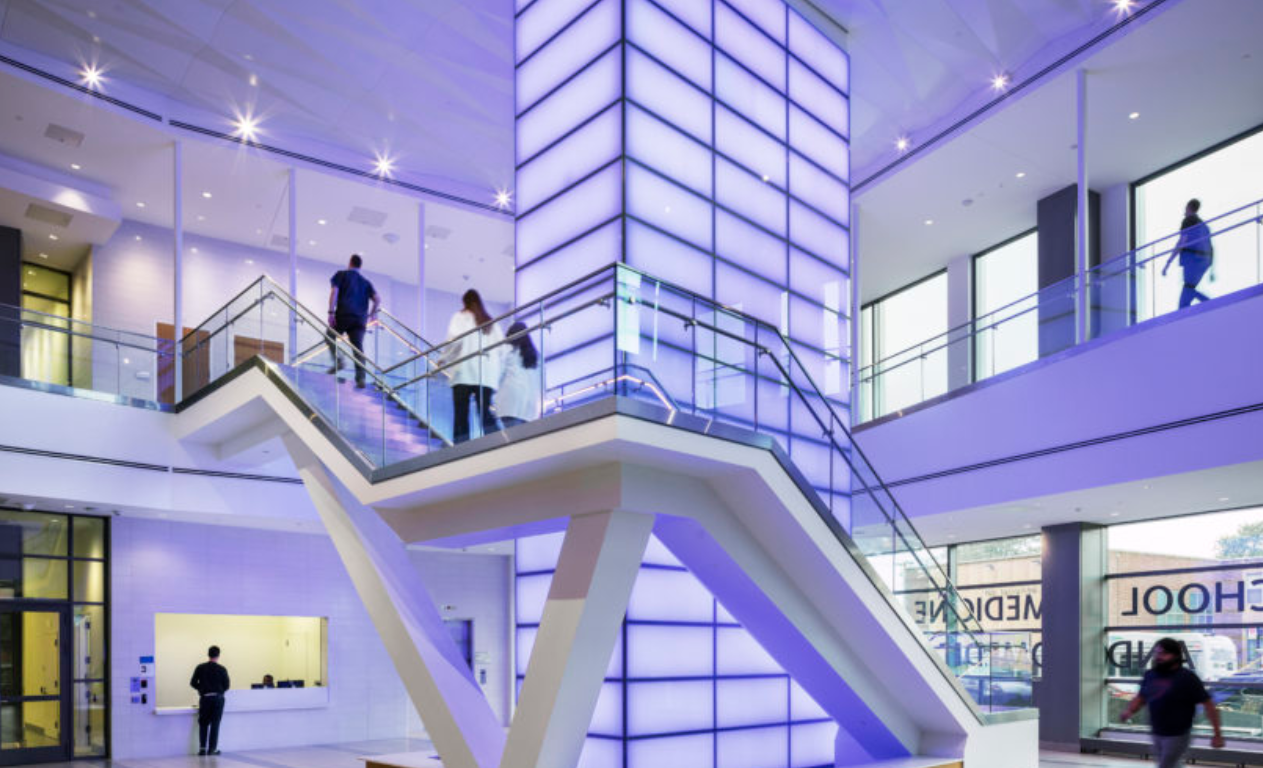
Transforming medical education at UB
MEERI is a critical piece of the Jacobs School’s Strategic Plan for Medical Education, planned over the past three years by a committee of medical school faculty, students and administrators, as well as medical education consultants. The goals of the institute are to foster the skills of medical educators and to promote scholarship in medical education, career advancement and recognition, as well as peer support. The committee has been working on enhancing the school’s medical curriculum in response to innovations led by the American Medical Association’s Change MedEd program and an enhanced emphasis on active learning from the Liaison Committee for Medical Education (LCME), the national accrediting body for medical schools.
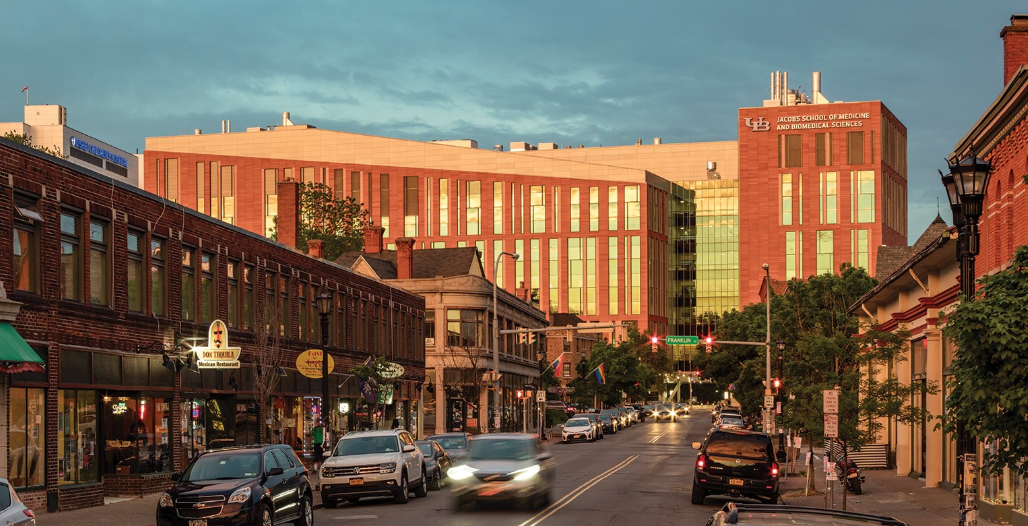
UB Jacobs School of Medicine & Biomedical Sciences
Founded in 1846, the Jacobs School of Medicine and Biomedical Sciences (SMBS) is one of the oldest medical schools in the United States. Research is fundamental to the mission of UB’s medical school. Faculty are responsible for training the next generation of basic scientists, who are focused on fundamental discovery, and translational investigators—the physician scientists—who work with patients to validate basic science discoveries. Large-scale clinical trials are also conducted. This “bench-to-bedside” continuum of research helps ensure the best possible care for Western New York and beyond, and its outcomes will serve as catalysts for health economies and health policy.
The SMBS has made an equally firm commitment to train practitioners of medicine. The goal is to prepare students so that they are capable of entering any field of graduate medical education and can excel in virtually any field of medicine that currently exists or is likely to develop in the future. The SMBS has organized a unique consortium of affiliated hospitals and research institutions offering a wide range of clinical experiences and training opportunities.
A Model System
Throughout its history, the university has not owned or operated a teaching hospital, but instead has instructed students in affiliated hospitals throughout the city. Today’s network of teaching affiliations was formalized in 1983 as the Graduate Medical Dental Education Consortium of Buffalo. It offers students a wide range of clinical experiences and training opportunities, and has served as a national model for graduate medical education.
Consortium of Affiliates
Our unique consortium of affiliated teaching hospitals and health care systems offers a wide range of clinical experiences and training opportunities. Kaleida Health System is the largest health care provider in Western New York, serving the region’s eight counties with five hospitals and numerous other facilities and services.
- Buffalo General Medical Center Located on the Buffalo Niagara Medical Campus, Buffalo General Medical Center offers a wide spectrum of clinical inpatient and outpatient treatment programs.
- Oishei Children’s Hospital (OCH) The only freestanding children’s hospital in New York State, this regional center for specialized pediatric and women’s health care has achieved national recognition and is the access point for pediatric critical care as the region’s only Level I Pediatric Trauma Center.
- Millard Fillmore Suburban Hospital Located in one of the area’s fastest growing suburbs, this 200-bed community hospital supports our training in anesthesiology, emergency medicine, general surgery, urology, obstetrics and gynecology, and family practice.
- DeGraff Memorial Hospital A 70-bed community hospital primarily serving the needs of patients in towns north of Buffalo.
- Erie County Medical Center This 550-bed medical center is one of the area’s leading health care providers. It serves as a regional center for trauma, burns, rehabilitation and cardiac care.
- Veterans Affairs Western New York Healthcare System The Buffalo VA Medical Center provides a wide range of inpatient and outpatient programs. It is the main referral center for cardiac surgery, cardiology and comprehensive cancer care for Western New York and northern Pennsylvania.
- Roswell Park Comprehensive Cancer Center A National Cancer Institute-designated comprehensive cancer center. For more than a century, Roswell Park’s physician-scientists have made fundamental contributions to reduce the cancer burden and helped set national standards for cancer care, research and education.
- New York State Center of Excellence in Bioinformatics and Life Sciences A major UB center of research, discovery, and commercialization of processes and technology to alleviate human suffering from disease
- Catholic Health System
- Hauptman-Woodward Medical Research Institute
- Olean General Hospital
- Niagara Falls Memorial Medical Center
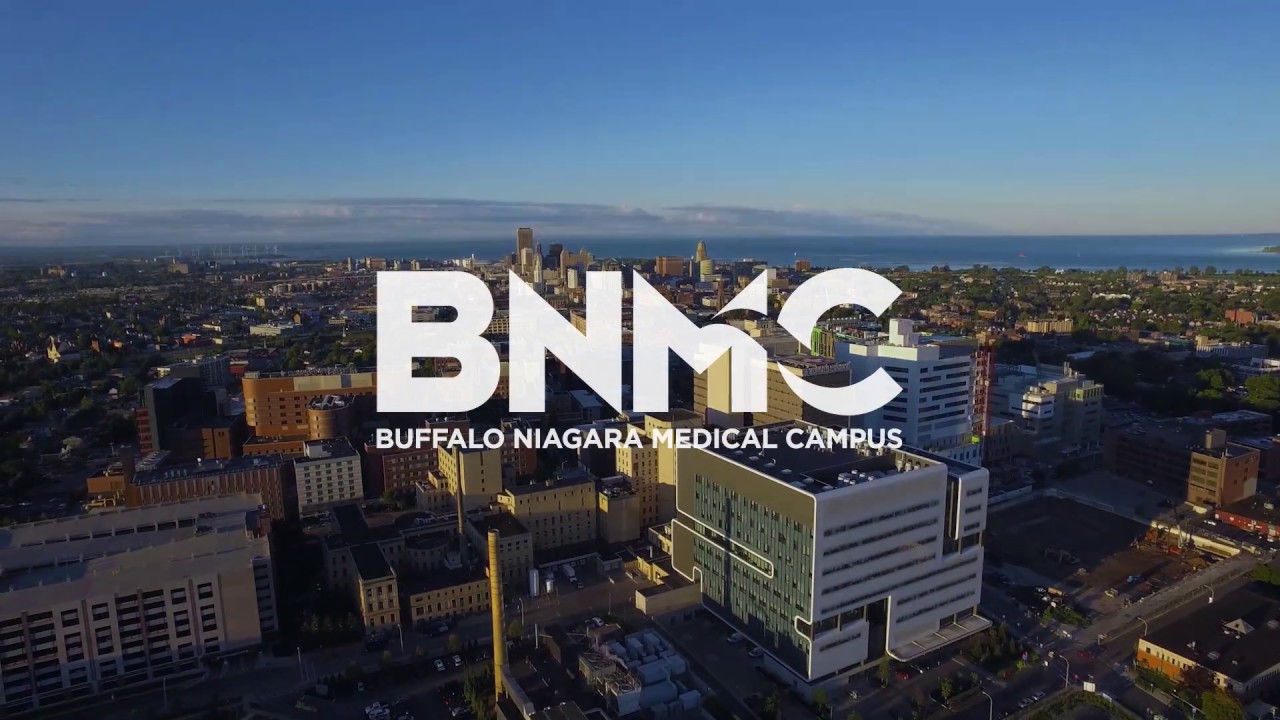
Buffalo Niagara Medical Campus (BNMC)
The pillar of our growing Downtown Campus is the Jacobs School of Medicine and Biomedical Sciences, which moved there in 2017 following construction of a state-of-the-art building at Main and High streets. Most of our other Downtown Campus entities are also located on or near Buffalo’s medical corridor, a lively hub of clinical care, research and educational institutions in the heart of the city. They include the New York State Center of Excellence in Bioinformatics and Life Sciences, the Clinical and Research Institute on Addictions, and the Clinical and Translational Research Center.
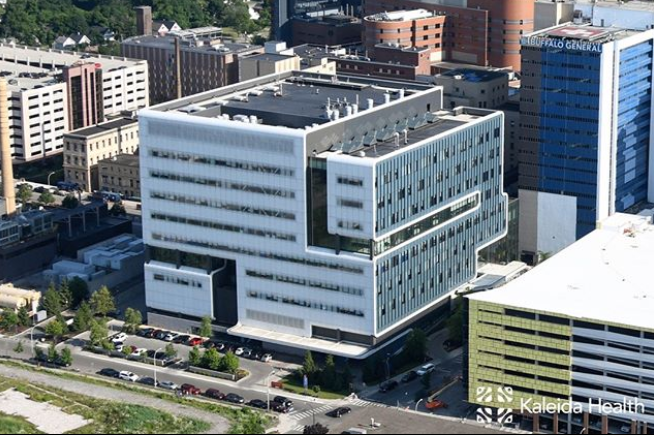
Kaleida Health System & Great Lakes Health
Kaleida Health is the largest health care provider and largest private employer (10,000 employees) in Western New York. More than one million patient visits are recorded annually at the Buffalo General Medical Center, Bradford Regional Medical Center, DeGraff Memorial Hospital, Gates Vascular Institute, Millard Fillmore Suburban Hospital, Oishei Children’s Hospital, Olean General Hospital, plus health system’s 80+ clinics and health care centers. Kaleida Health operates HighPointe on Michigan and the DeGraff Memorial Hospital skilled nursing facility, plus the nation’s oldest – and original – Visiting Nursing Association. Kaleida Health also operates a major laboratory division as well as the Millard Fillmore Ambulatory Surgery Center. The organization is also affiliated with Great Lakes Health, the entity integrating Kaleida Health, Erie County Medical Center (ECMC) Corporation and the University at Buffalo. Kaleida Health’s economic impact on Western New York exceeds $2.7 billion annually.

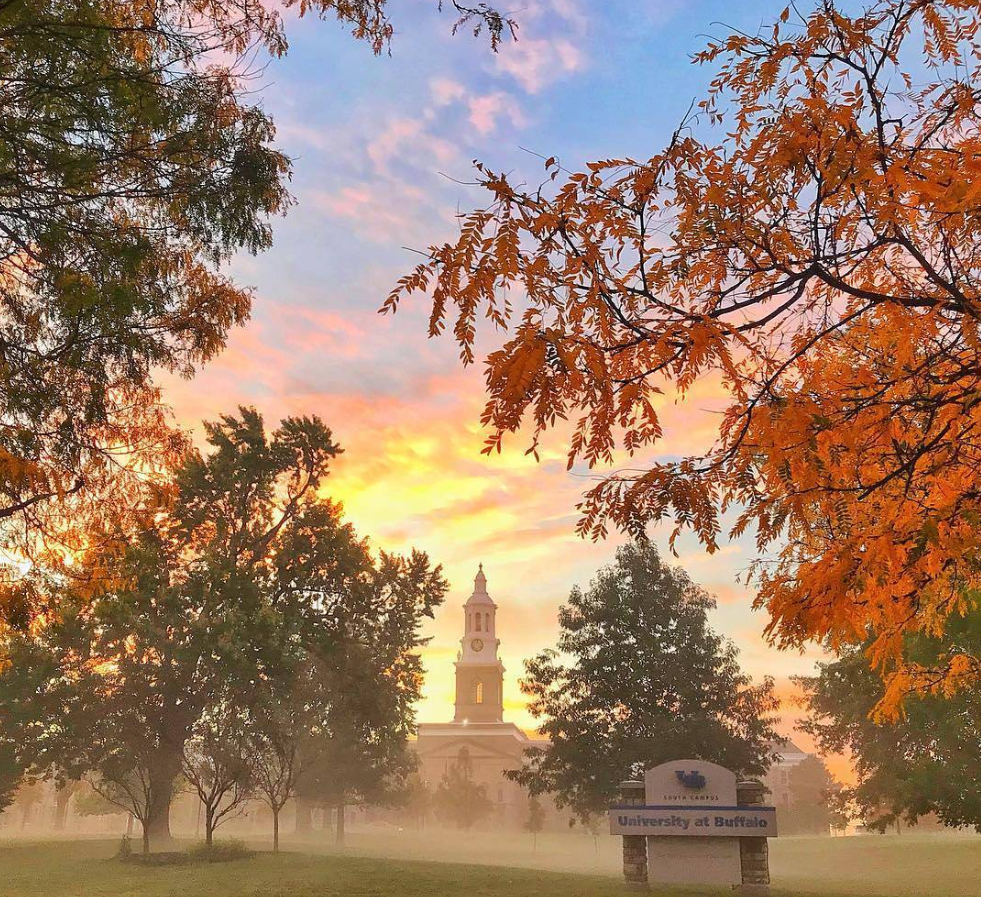
About the Buffalo/Niagara Region
Buffalo is the second-largest city in New York State and is located on the shores of Lake Erie, upriver of the majestic Niagara Falls. Buffalo – the City of Good Neighbors – is undergoing a renaissance with a rapidly growing economy, vital academic health sciences center, and affordable cost of living. The Western New York educational system is excellent. Buffalo-Niagara is a region of 1.2 million people, world-class art galleries and museums, a comprehensive city-wide system of parks and green space, a vibrant theater and music community, and major and minor league sports teams.

Buffalo is Booming
Buffalo is a thriving city situated in a region of more than two million people that offers a world of opportunity. World-class art galleries and museums, a comprehensive city-wide system of parks and green space designed by renowned landscape architect Frederick Law Olmsted, and major and minor league sports teams are just a few of the wide array of cultural and recreational elements that make Buffalo such a great place to study, work, and live.
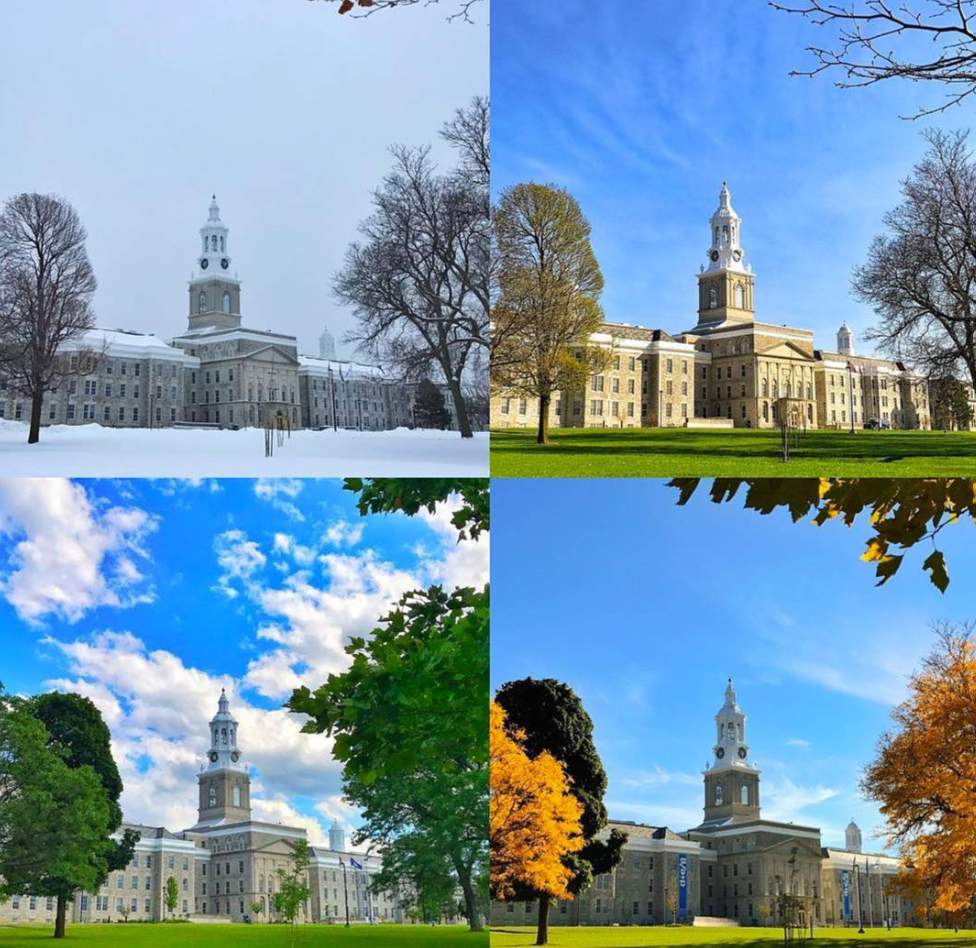
Experience Four Seasons
Four robust seasons allow for an endless range of outdoor pursuits, from sailing to skiing, while a range of professional sports teams keep the city fired up year-round.The Canadian metropolis of Toronto is less than a two-hour drive away and is a favorite getaway destination for those seeking the metropolitan flair of this sophisticated city.
Buffalo features outstanding high schools, including City Honors School, which Newsweek ranked as the fourth-best in the nation. Many more rank within the top 100. Artistic indulgence is plentiful with a vast array of professional theaters, performance venues, and galleries.

Niagara Falls is a 25 Minute Drive
Niagara Falls is a group of three waterfalls at the southern end of Niagara Gorge, spanning the border between the US state of New York and the Canadian province of Ontario. The Falls are just a short drive from Buffalo. Niagara Falls is famed both for its beauty and as a valuable source of hydroelectric power.

A City on the Rise
Since manufacturing and railroad production has left Buffalo, the city has reinvented itself as a hotbed for emerging tech, finance and health care. Tesla Motors calls Buffalo home for its solar powered product factory, and Kaleida Healthcare has long been a top employer for Buffalo residents
The Buffalo area offers all of the amenities of a major urban area—without the headaches. The average workday commute is less than twenty minutes, which is the lowest out of fifty major U.S. cities. Affordable housing is widely accessible throughout the region, and reasonable costs of living make the good life possible on any budget. Most neighborhoods offer easy access to shopping, recreation, dining, and excellent schools.

Top 100 Best Place to Live
Located right on the United States-Canada border, Buffalo has long been an access point for anyone looking to visit our friendly neighbors to the north or experience the awe-inspiring majesty of Niagara Falls. Residents of Buffalo acquiesce to cold winters and often-disappointing professional sports teams in return for a low cost of living (the city earned the #2 spot on our Best Affordable Places to Live list), tight-knit community and rapidly evolving downtown scene.
City of Lights
Buffalo also received an above-average rating in the infrastructure category thanks to the city’s harnessing of hydro-power from Niagara Falls to create a cheap and reliable energy source (earning Buffalo its “City of Lights” moniker). In addition, downtown Buffalo offers a metro-rail extending from one end to another, allowing residents a quick way to traverse the city.




